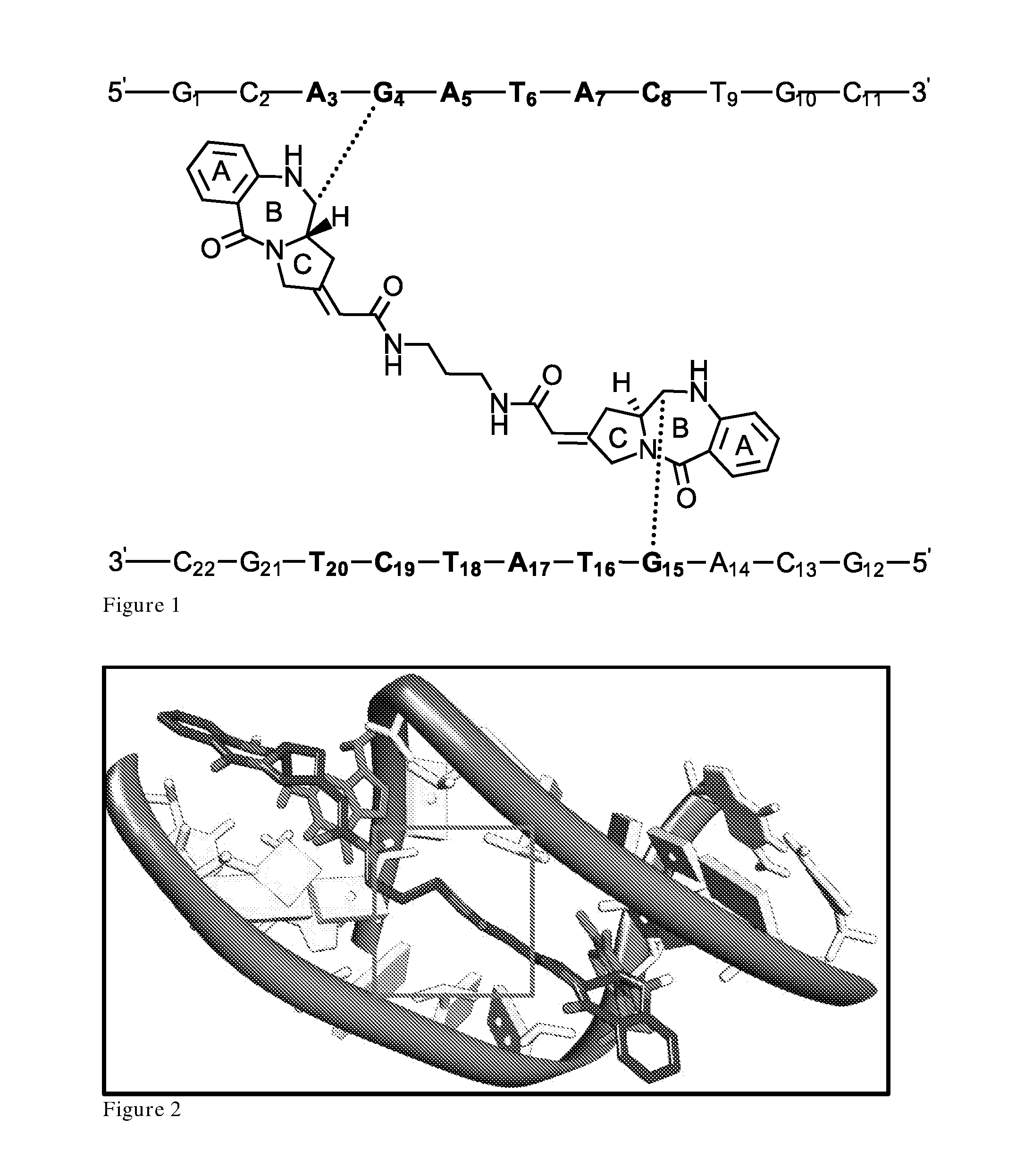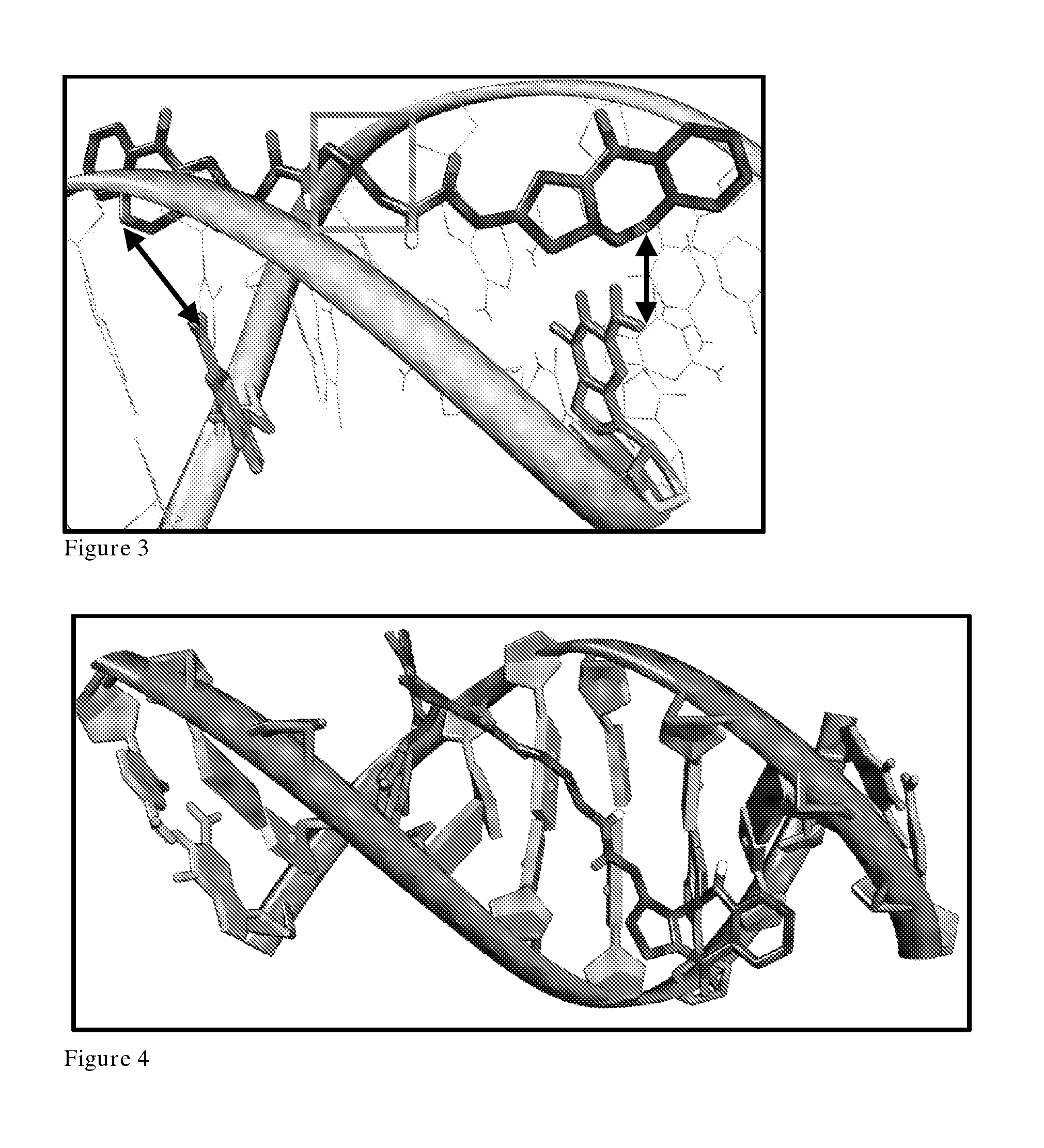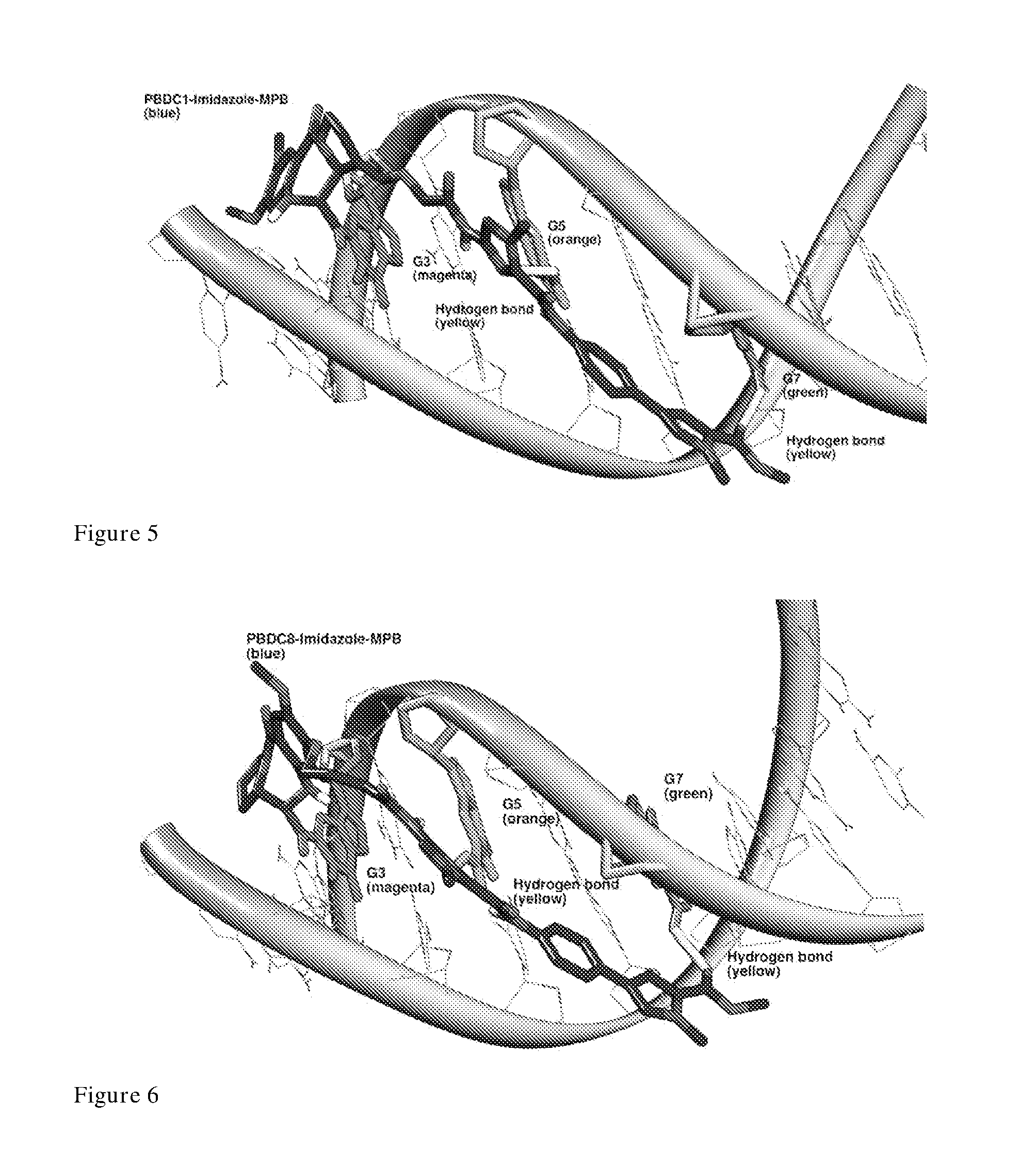Pyrrolobenzodiazepine compounds
a technology of benzodiazepine and pyrrolobenzodiazepine, which is applied in the field of pyrrolo2, 1c1, 4 benzodiazepine, can solve the problems of limited success, failure to link pbd monomers, and failure to achieve the effect of c-ring,
- Summary
- Abstract
- Description
- Claims
- Application Information
AI Technical Summary
Benefits of technology
Problems solved by technology
Method used
Image
Examples
example 1
MD Simulations of a C2 Dimer
[0443]The extended C2 side-chain of a PBD molecule [for example, the polyacrilamide tail in anthramycin (16)] is important for DNA interactivity, with the structure forming stabilizing van der Waals interactions and sequence-specific hydrogen bonds with the minor groove floor. Early studies postulated that without the acrylamide side chain, anthramycin might not be so DNA-interactive (80, 81).
[0444]However, the C2 position has been investigated in dimer structures as a potential linking point, with limited success. Examples of this include a C2 dimer produced by Lown et al. (33) (FIG. 1), which showed poor DNA binding relative to C8 / C8′-linked dimers. Furthermore, C8 / C2′ conjugates produced by Kamal et al. (34, 35), showed similarly poor binding with DNA calf thymus melting studies producing results on par with natural monomer structures.
[0445]MD simulations of the C2-linked dimer structure (FIG. 2) covalently bound to the binding site 5′-GCAGATACTGC-3′ (...
example 2
MD Simulations of a C1-Dimer
[0449]Simulations of the C1-linked PBD dimer suggested enhanced DNA binding ability over the C2-linked structure. In non-covalently bound simulations, the C1-linked dimer maintained a position directly over the reacting guanine for the duration of the simulation (i.e. G4 of 5′-GCAGATACTGC-3′). It is important to note the linking group between each C1 of the PBD dimer is in the correct orientation to interact with the minor groove floor in non-covalent simulations, exemplified by favourable free energy of binding values (−7.6 kcal / mol difference in favour of C1-linked dimer structure).
TABLE 1Structures and Free Energy of Binding Values of C1-Linked and C2-Linked Dimers with 5′-GCGATACTCGC-3′Free Energy of StructureBinding (kcal / mol)−50.42Cl-linked dimer−42.74C2-linked dimer
[0450]In a similar manner to the C2-linked dimer, the second free PBD is not in the correct orientation to interact with its binding guanine (G16) in simulations of single covalent attac...
example 3
MD Simulations of C1-Conjugates
[0453]The C8-linked PBD monomeric conjugate KMR-28-39 has femtomolar activity against some cancer cell lines. The structure, when linked to an imidazole group, is known to be GC-selective when interacting with DNA, a feature thought to contribute to its enhanced DNA binding affinity and cytotoxicity. The MPB moiety provides the structure with its GC-selectivity (82).
[0454]When the Imidazole-MPB moiety is tethered to the C1 position, the new PBD-C1-Imidazole-MPB structure produces the same interactions with DNA as KMR-28-39 (PBD-C8-Imidazole-MPB). This is exemplified in snapshots of MD simulations of KMR-28-39 (PBDC8-Imidazole-MPB) and PBDC1-Imidazole-MPB which shows identical hydrogen bonding interactions are formed between each structure and the DNA sequence (FIG. 3).
[0455]When modelled with the poly-guanine DNA sequence 5′-GGGGGGGGCC-3′ and covalently bound to G3 (underlined), hydrogen bonding interactions are formed between the ring nitrogen of imid...
PUM
 Login to View More
Login to View More Abstract
Description
Claims
Application Information
 Login to View More
Login to View More - R&D
- Intellectual Property
- Life Sciences
- Materials
- Tech Scout
- Unparalleled Data Quality
- Higher Quality Content
- 60% Fewer Hallucinations
Browse by: Latest US Patents, China's latest patents, Technical Efficacy Thesaurus, Application Domain, Technology Topic, Popular Technical Reports.
© 2025 PatSnap. All rights reserved.Legal|Privacy policy|Modern Slavery Act Transparency Statement|Sitemap|About US| Contact US: help@patsnap.com



